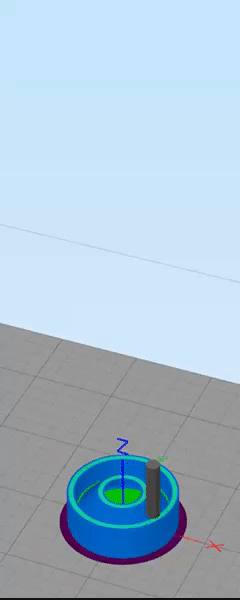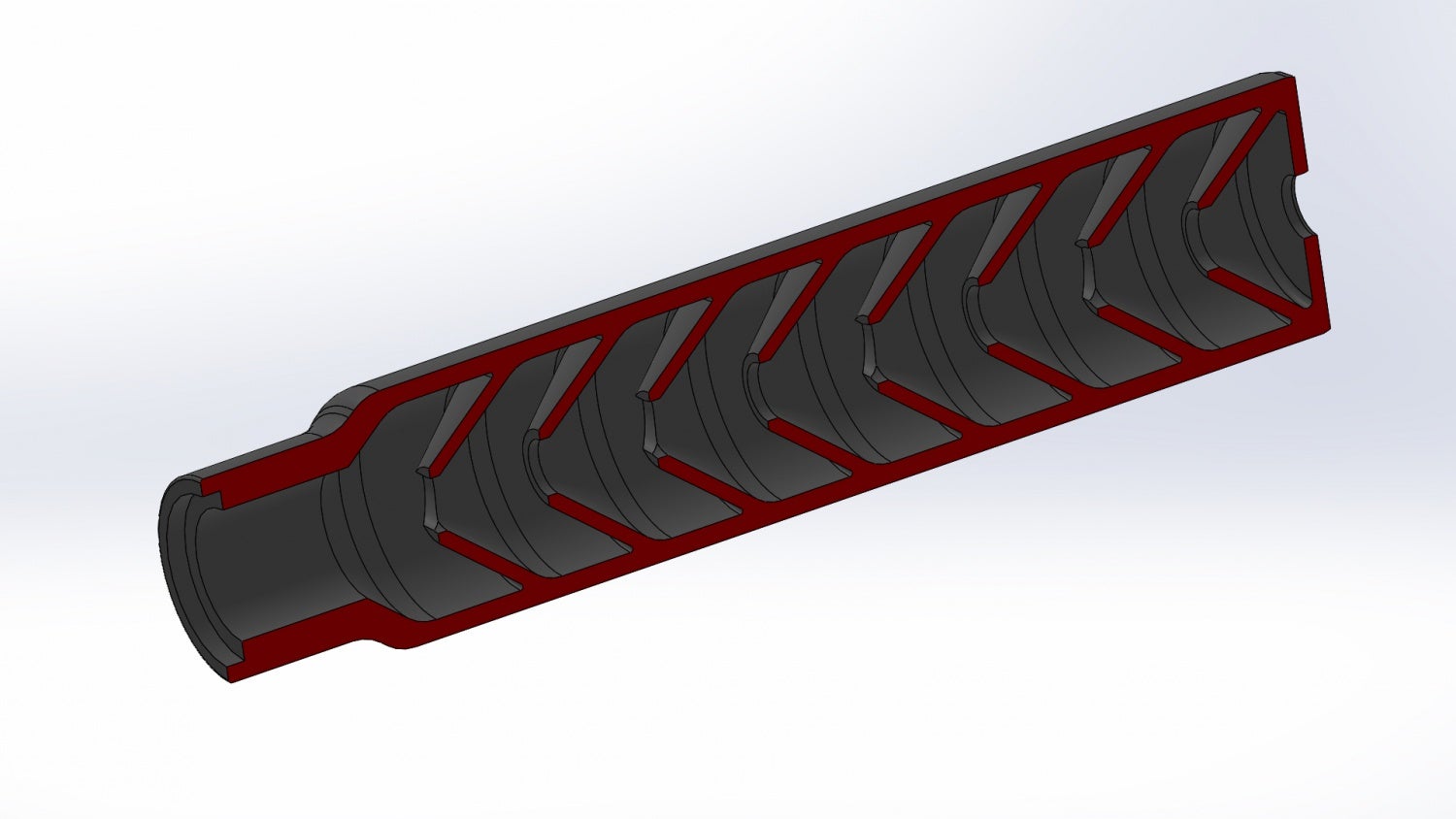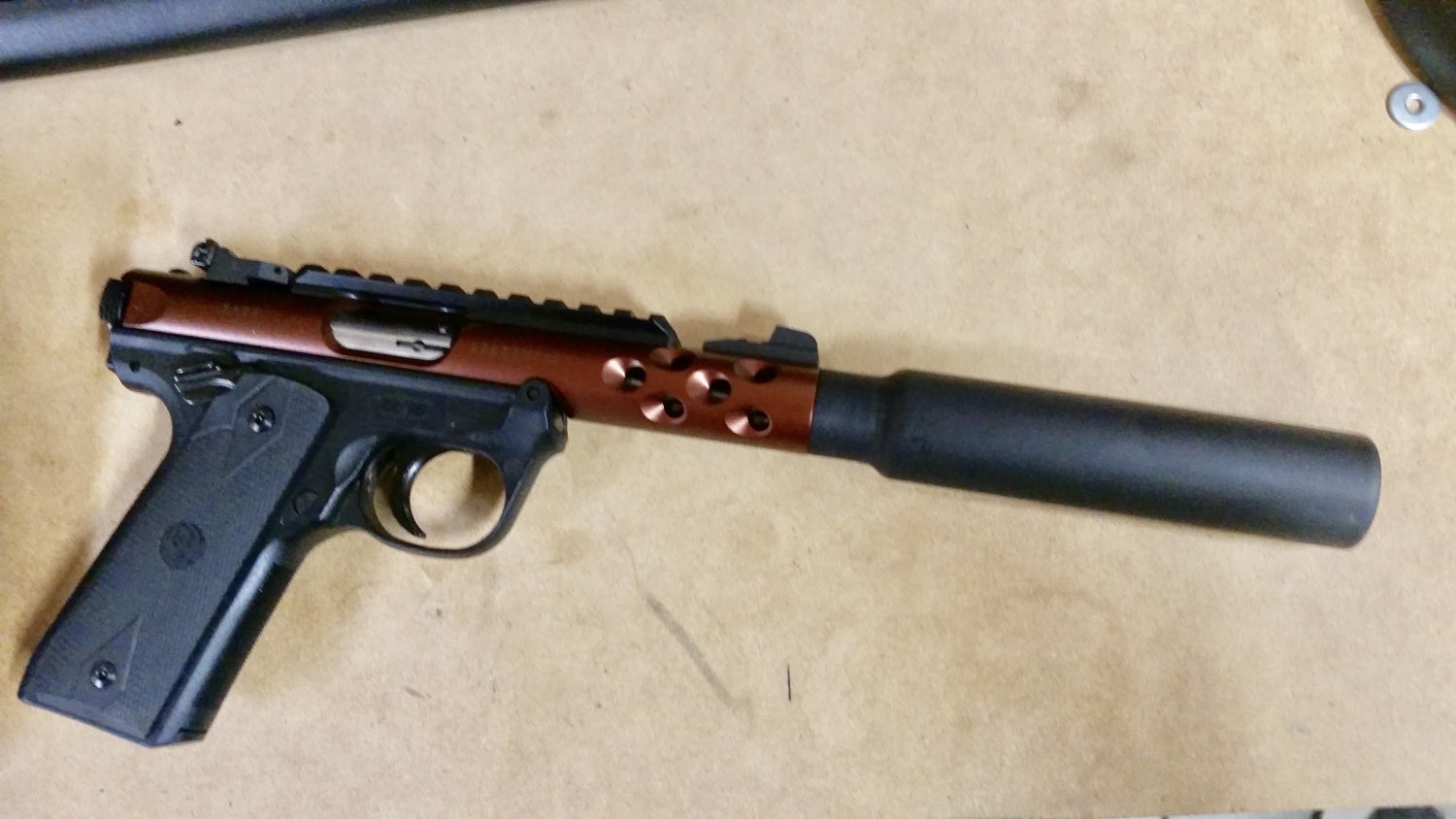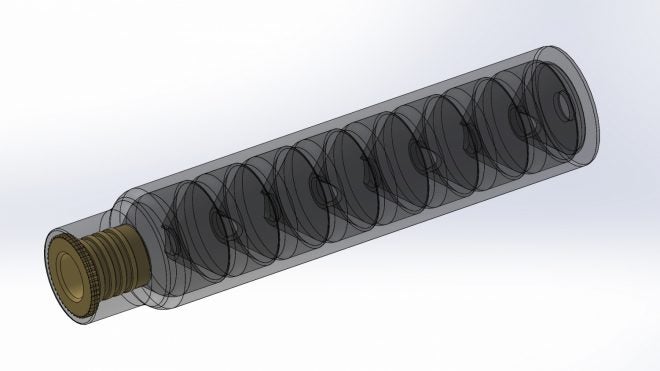I am willing to bet that when the National Firearms Act of 1934 was enacted, no one in the the government, firearms industry or the general public envisioned technologies like 3-D printers being used to create gun parts. Let alone being used to make silencers. Eighty years later, a machine simple enough to be run by almost anyone with a bit of skill and common sense can make plastic parts in a matter of hours.
First off, let’s be crystal clear: maker, Jordan Bowles followed all US laws and regulations for the creation of a legal firearm suppressor. This includes filing all the necessary paperwork, noteably the ATF Form 1 application to make and register an NFA controlled device, pay a $200 tax, undergo a background check and wait nine months. Insane for something that is essentially a glorified slurpy straw. But what do I know.
Of course, building a rimfire suppressor out of ABS plastic does have some downsides. For one, cleaning lead and powder residue from the enclosed baffle stack will be next to impossible. And the lifespan and durability won’t compare to to a steel or aluminum build.
However, in a world where silencers aren’t regulated to the max, a simple, cost effective 3-D printed silencer makes the possibility of a ‘three-pack impulse buy’ at the gun shop couster a reality.
I’ll let Bowles explain his build in detail:
I waited 9 months and payed a $200 tax to print a $2 piece of plastic in my basement, please take the time to support the Hearing Protection Act of 2017, H.R.367 and S.59, so that all law abiding people in the USA can enjoy the comfort and safety of suppressed firearms without having to needlessly wait months and pay exorbitant and unjust taxes.

First off this was not my first 3D printed silencer, I had experimented with using 3D printers to make silencers when I was a designer at a firearms manufacturer, having a Class 02 SOT made it easy to handle the paperwork and legality of it, anyways that few years ago. Fast forward to June of 2016, 41P was about to go into effect and I wanted a .22LR silencer, nothing was in stock to do a Form 4 on, so I eFiled a Form1 under my trust. It wasn’t until recently I started to think about how I was going to build my silencer. I had considered doing a full from-scratch build, buying some “solvent trap” as a short cut, or using my 3D printer to print one. In the end combination of wanting to do something interesting and a bit of laziness lead me to decide to the print one.

As I started to get a solid idea of when I could expect my Form 1 to be approved I started thinking about the design. I dusted off my now years old designs and started making notes as to what I wanted to accomplish. The biggest departure was switching to a totally monolithic design verses a more typical baffle stack in a tube, wanted to leverage the unique abilities of FDM(fused deposition modeling) 3D printing. After playing around in Solidworks a bit I settled on a simple 6” long stack of 8 cone baffles, this type of designed allowed me to print the silencer without the use of any additional support material, and it keeps everything reasonably concentric. The true monolithic construction also minimized the amount of the “silencer parts” involved I wanted the design to be as simple as possible for a potential ATF agent to understand.

I printed this out of ABS filament, it’s basically just 8 stacked cones, it allowed me to print it as one solid piece of plastic. I turned and knurled a barbed thread insert that I heated and pressed/melted in, using a 16″ barrel kept an eye looking down the bore checking alignment as I spun the barrel and my tweaks to the still pliable base of the silencer as it cooled, I marked the front cap by heating letter punches with a torch and basically branded the plastic to a nice depth.

The bore was a little oversized and tapered to insure against baffle strikes. The only other component was a brass heat-set thread insert, I went with this for few reasons. Number one being I didn’t really trust the plastic to have enough hold on the ½”-28 x .400” muzzle threads of the host Ruger Mk4 22/45 Lite, next I wanted the base to have some heat capacity to slow down the heating of the plastic a good size hunk of brass accomplished this nicely, finally I wanted to steer clear of the Undetectable Firearms Act of 1988 it doesn’t seem to apply to silencers but I figured making it metal-detectable wasn’t a bad idea.

NOTE: The specifics of the “Undetectable Firearms Act” referenced by Bowles above is ounlined in 18 U.S.C. 922(p):
(1)It shall be unlawful for any person to manufacture, import, sell, ship, deliver, possess, transfer, or receive any firearm —
(A)that, after removal of grips, stocks, and magazines, is not as detectable as the Security Exemplar, by walk-through metal detectors calibrated and operated to detect the Security Exemplar; or
(B)any major component of which, when subjected to inspection by the types of x-ray machines commonly used at airports, does not generate an image that accurately depicts the shape of the component. Barium sulfate or other compounds may be used in the fabrication of the component.
(2)For purposes of this subsection —
(A)the term “firearm” does not include the frame or receiver of any such weapon;
(B)the term “major component” means, with respect to a firearm, the barrel, the slide or cylinder, or the frame or receiver of the firearm; and
(C)the term “Security Exemplar” means an object, to be fabricated at the direction of the Attorney General, that is—
(i)constructed of, during the 12-month period beginning on the date of the enactment of this subsection, 3.7 ounces of material type 17–4 PH stainless steel in a shape resembling a handgun; and
(ii)suitable for testing and calibrating metal detectors:
Provided, however, That at the close of such 12-month period, and at appropriate times thereafter the Attorney General shall promulgate regulations to permit the manufacture, importation, sale, shipment, delivery, possession, transfer, or receipt of firearms previously prohibited under this subparagraph that are as detectable as a “Security Exemplar” which contains 3.7 ounces of material type 17–4 PH stainless steel, in a shape resembling a handgun, or such lesser amount as is detectable in view of advances in state-of-the-art developments in weapons detection technology.
The next morning I made it to the range just as the sun was coming up to find it empty enough to occasionally slip-off my ear muffs and get a good feel for the performance. While I didn’t have a conventional commercially produced silencer with me to compare it to, I did have some experience with similar suppressed .22lr pistol setups. The silencer performed admirably, it didn’t explode, no baffle strikes, and didn’t stand out as any louder or quieter than my memory of other setups. Truth be told this was the first time shooting the host pistol as well so I can’t really speak to the accuracy or point of impact change. I fired about 100 rounds of PMC 40 gr. Moderator Sub-Sonic .22LR, aside from the fouling on the inside it looked as good as new. I suspect fouling will be the death of this silencer before some sort of material failure will be, as there is nothing to take apart to clean.
VersionS of 3-D priniting will be the future of the firearms industry. Of course, there are companies currently using somewhat more complex additive manufacturing that allows for the building high-pressure rifle suppressors. But there is plenty of room for innovators.
 Your Privacy Choices
Your Privacy Choices
